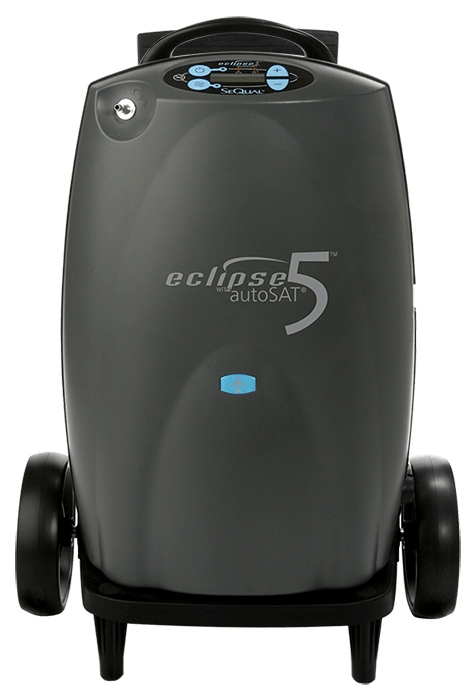
Whether your loved one is headed out to enjoy a summer vacation or visit a family member, air travel is often the easiest way to reach their destination quickly and comfortably. However, boarding a plane for a quick flight or a longer jaunt can be stressful for older adults who may have challenges with mobility, cognition, or pain. Fortunately, planning and preparation can go a long way in making the trip easier and more comfortable. Here, we share some air travel tips to help your older adult loved one arrive at their destination easily and safely.
Consider the flight time before booking travel
While you might find early-morning or late-night flights less expensive, those times are not always ideal for a traveling senior. Depending on your loved one’s preferences, mobility, medication schedule, and pain, you might find that paying more for a midmorning, afternoon, or early-evening flight is well worth the possible extra cost.
Work with your loved one to consider the benefits of a midmorning or afternoon flight, especially if they wake up feeling stiff and sore or have other physical or medical needs better dealt with at certain times of the day. Giving them time to adequately prepare in the morning can help them feel their best before they board the plane. Similarly, avoiding late-night flights can ensure they get the proper rest needed for traveling and enjoying their time away.
Communicate with the airline about travel needs
As you book the flight, consider communicating with the airline about your loved one’s physical or medical needs. Customer service agents are there to support clients, and you can give them details about your loved one’s challenges so that they can offer potential solutions and ensure your loved one has the support they need. The airline might be able to find a way to give your loved one more legroom or answer questions about medical equipment that your loved one might need to bring on board. The reservation process is also the time to request any assistance, such as a wheelchair or luggage cart assistance to and from the gate.
Practice collapsing mobility aids before traveling
If your loved one is traveling alone and uses a mobility aid, be sure they know how to collapse their mobility aid or can explain how to do it to someone else. Practice makes perfect, especially when it comes to collapsing wheelchairs or walkers that need to be stowed away during flights. If you are traveling with a loved one who needs assistance, practice how to operate their mobility aid to make navigating the airport and airplane smoother. You or your loved one will need to collapse their mobility aid when getting in their ride to the airport, on any trams, and while on the plane.
You might also consider purchasing a smaller travel version of your loved one’s mobility aid, such as a folding cane. These canes fold up and can be stored in a bag when not in use, which could make traveling a little easier.
Pack medicines in a carry-on
Checked baggage can become lost or delayed, so it is wise to pack medications in your loved one’s carry-on luggage. Be sure medications are labeled and easy to access, especially if your loved one needs to take them during the flight or while at the airport. If space is an issue, use a smaller pillbox of only the medications needed during their time in the airport or on the plane. Include extra doses in case of delays.
Print a list of your loved one’s current medications and put it in their carry-on as well. This list can come in handy if they run out of something or if there are any questions in the security line at the airport.
Pack favorite foods and a reusable water bottle
Your loved one might struggle to find healthy foods, especially if they are on a prescribed diet, while at the airport or on the airplane. Pack favorites in their carry-on to ensure they always have access to a healthy snack. Also include an empty reusable water bottle they can fill at a water station in the terminal rather than having to find and purchase bottled water at the airport.
Pack communication devices and chargers
As much as you might plan and prepare, the unexpected is still bound to happen. If your loved one is traveling alone, ensure their cell phone is charged and accessible. Text them regularly to check in during preboarding and to verify when they are expected to land. A smartphone can also be an excellent distraction if their flight is delayed. Also pack their charger in their carry-on luggage so they can ensure that the device doesn’t run out of battery while at the airport or on the airplane. Consider including a portable battery pack to ensure your loved one can charge their phone no matter their access to power outlets or the delays they might endure.
Consider using travel tracking tags for personal belongings
Tracking tags, like Apple’s AirTags, can be helpful when traveling with an older adult. These devices allow you to use an app to track the location of whatever you have packed them in or attached them to. Tag your loved one’s luggage as well as their person, especially if you are concerned about their traveling alone. The app associated with your tracking device will tell you where they are and where their luggage is, which can come in handy if they cannot locate their bags or describe where they are when you pick them up at the airport.
Order accessible transportation to and from the airport
Your loved one’s travel experience begins when they get into their transportation to the airport. Ensure the transportation is accessible for their needs and abilities. For an older adult who doesn’t require additional assistance, a taxi, Uber, or Lyft will work just fine. Simply ensure your loved one has the applicable app or taxi company contact information so they can follow up with the ride company as needed.
For an older adult traveling with a walker, wheelchair, or other medical device, transportation must be large enough for the senior, their luggage, and their devices. You can request a larger vehicle from the transportation company to meet those needs.
Some seniors require hands-on assistance during travel. If this is the case, you cannot rely on the transportation service to supply that unless it is through a home care agency. Consider hiring a caregiver or accompanying your loved one to the airport if they need more extensive assistance.
Arrive at the airport early
While the rule of thumb for most travelers is to arrive at the airport early, older travelers should consider giving themselves even more time, especially if they need assistance to and from airport gates. The U.S. Department of Transportation recommends arriving as early as possible and then immediately self-identifying as a passenger with disabilities who has requested assistance or transportation. If you’re using a wheelchair from the airline, you are entitled to it until you get to your gate, where they will ask you to sit in the waiting area. If you require additional assistance to get on the plane, the airline representatives will arrange that as well.
Note the flight number
If your loved one is traveling alone, ensure you have their current flight number information. You can track their arrival times and any delays by following the flight number on the airline’s website or app. If you’re picking them up from the airport, this will come in handy to ensure you aren’t circling the airport while waiting for them to arrive or making them wait alone in the airport if their flight lands early.
Air travel is generally quite accessible for older adults, though it is even easier with a bit of planning and forethought. These travel tips, including choosing the right flight time, packing essential items, and considering your loved one’s mobility or medical needs, will ensure they remain safe while traveling. Here’s to a safe trip!








